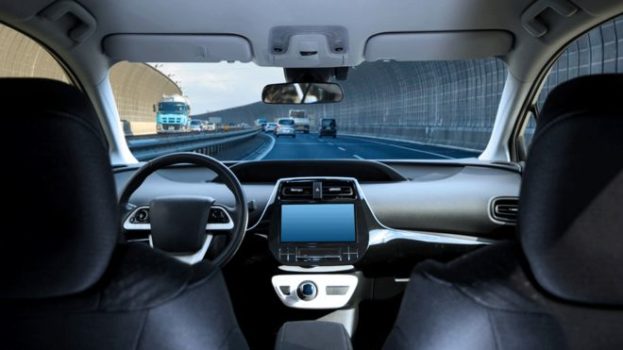
The Department for Transport wants to see fully autonomous cars – driving with no human oversight – and cars with no steering wheels tested on UK roads.
Currently, the rules around trials require a human remote driver – not necessarily inside the vehicle but ready to take over control if needed.
Any new trial must, however, abide by strict rules, including informing the authorities and emergency services
Companies must also perform risk assessments and publish safety details.
The desire to see fully autonomous cars on the UK’s road by 2021 comes despite a series of fatal crashes in the US.
Caught fire
Driverless car technology suffered a major setback when an Uber autonomous car was involved in a fatal crash in Arizona in March 2018. Uber halted its tests after a pedestrian was killed.
In the same month, another fatal crash occurred in California, when a Tesla in Autopilot mode crashed into into a roadside barrier and caught fire.
The UK government has promised to have autonomous cars on the roads by 2021.
And it is estimated the UK market for connected and automated vehicles will be worth £52bn by 2035.
‘Guinea pigs’
Automotive Minister Richard Harrington said: “We need to ensure we take the public with us as we move towards having self-driving cars on our roads by 2021.
“The update to the code of practice will provide clearer guidance to those looking to carry out trials on public roads.”
In the US where there are multiple driverless trials, there is also rising criticism. Prof Mary Cummings, from the Pratt School of Engineering, has described the technology as “deeply flawed”.
And Jason Levine, executive director at the Center for Auto Safety, has stressed the need to get the technology right first and not use humans as “guinea pigs”.
In the UK, Jack Cousens, head of roads policy for automotive association AA, said: “While we generally welcome ambitious targets, 2021 feels extremely challenging given the technical and legal hurdles yet to be overcome.
“It is possible we might see ‘driverless’ vehicles following fixed routes in dedicated lanes by then – but the self-driving vehicle that can take you from your home to anywhere and back again in any weather and in mixed traffic is much, much further away.”
Some of the limitations include:
The Lidar units that scan the environment can be obscured by heavy snow, rain or fog, which is why many of the current trials are in warm-weather states such as Arizona and California
Lane markings differ around the world, meaning cars need to learn how to drive differently from country to country
Human drivers often confuse autonomous cars by double-parking, walking in front of them and not behaving entirely logically
Humans are reluctant to give up control – a survey by US automotive association AAA suggests 73% of Americans would be too fearful to ride in a fully-automated vehicle
What do you think about this piece? Share your comment in the comment thread and share the story using the social media buttons above. You may reach the editor on 0249579664. Thank you.